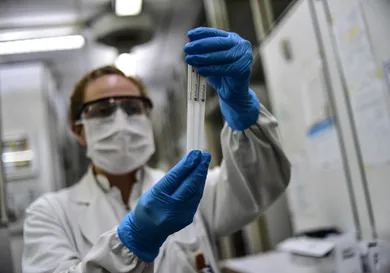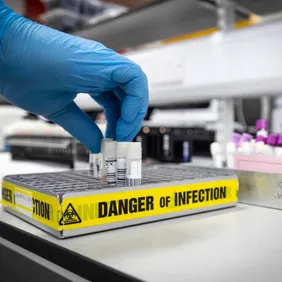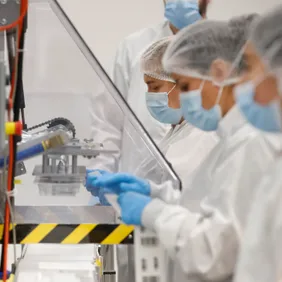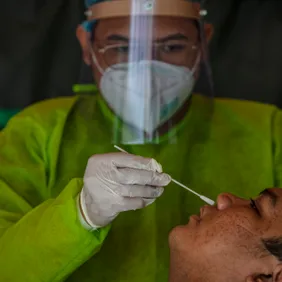The coronavirus news isn't over just yet. The pandemic still has a hold on the nation, despite some States moving to re-open businesses, with California recently adding themselves to the list. Nonetheless, the number of cases and deaths continues to climb worldwide, with the United States cases currently totaling 1.2 million, and deaths reaching 70,000 plus.
Scientists and researchers are still learning about the novel coronavirus, and it seems like every day a new revelation is made. From symptoms to contagiousness, we still don't know everything about this virus. Now a new study led by the Los Alamos National Laboratory shows that the current dominant strain of COVID-19 is even more contagious than the original strain, from the early days of the pandemic.
The Los Angeles Times reports that this new strain began to appear first in Europe in February, and travelled from there to the Middle East, and then the United States where it has now taken over and become the dominant strain of the coronavirus. Washington was among the first States to be affected by the original strain of the virus in February, however by March 15, the strain had mutated to the current dominant one. New York was infected with the original strain on March 15, however a few short days later the strain had already mutated to the dominant one. The study does not share the results for California's cases.
The report states how, wherever this new strain of COVID-19 appeared, it spread much faster than it did originally in Wuhan, China, thus infecting more people-- however the reason as to why it is so much more contagious than the original strain is unknown. Despite the fact that this new strain is more contagious, it is not necessarily more deadly-- at least, we do not know exactly yet-- a localized sample of 447 patients showed that hospitalization rates were similar for either version of the virus.
The Los Alamos team has been able to identify 14 different strains of the coronavirus, using computer analyzation of more than 6,000 coronavirus sequences from around the world.
Despite this rather terrifying news, Bette Korber, a computational biologist at Los Alamos shared a few optimistic words on her Facebook page in the face of it all.
"The story is worrying, as we see a mutated form of the virus very rapidly emerging, and over the month of March becoming the dominant pandemic form," she wrote. She continued, "This is hard news, but please don’t only be disheartened by it. Our team at LANL was able to document this mutation and its impact on transmission only because of a massive global effort of clinical people and experimental groups, who make new sequences of the virus (SARS-CoV-2) in their local communities available as quickly as they possibly can."
She added, "Please be encouraged by knowing the global scientific community is on this, and we are cooperating with each other in ways I have never seen … in my 30 years as a scientist."







